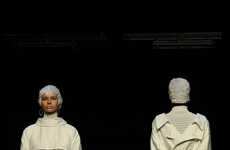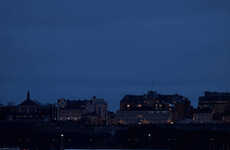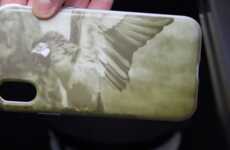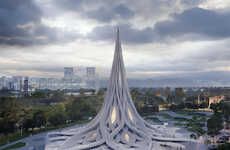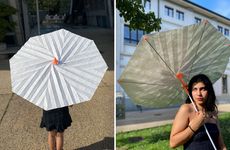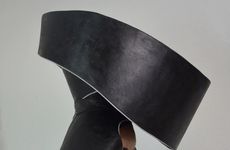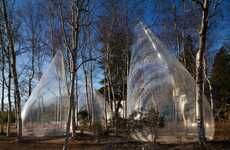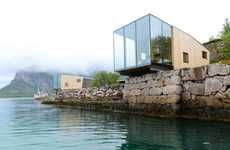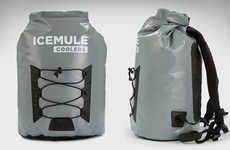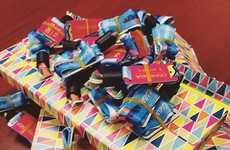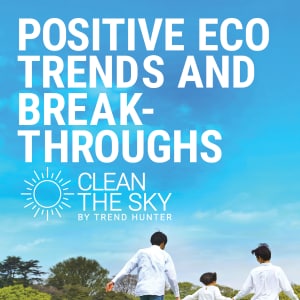
Water Culture by Fabrica Consists of Transforming Textile Shelters
Alyson Wyers — December 24, 2015 — Art & Design
References: fabrica.it & fastcodesign
With color-changing textile technology, these rain shelters are able to bring some cheer to gloomy, rainy days. They could also be used as a color-coded communication system in cities.
Developed by Fabrica, the Water Culture project was conceived for the Design for Change competition based in Lille, France. The rain shelters won first place in the competition to improve the quality of lives of the residents of Lille. The textile shelters are supposed to help with the emotional health and well-being by turning negative weather conditions into a more positive experience.
The experiment uses hydro-chromatic structures to change color in the rain. They can also make vibrant patterns that will be a welcome addition to overcast skies of the French city.
Developed by Fabrica, the Water Culture project was conceived for the Design for Change competition based in Lille, France. The rain shelters won first place in the competition to improve the quality of lives of the residents of Lille. The textile shelters are supposed to help with the emotional health and well-being by turning negative weather conditions into a more positive experience.
The experiment uses hydro-chromatic structures to change color in the rain. They can also make vibrant patterns that will be a welcome addition to overcast skies of the French city.
Trend Themes
1. Color-changing Textile Technology - The technology to change the color of textiles in response to external factors presents opportunities for creating innovative and interactive products.
2. Emotional Well-being Enhancement - Designing products that improve emotional health and well-being, such as rain shelters that transform negative weather into a positive experience, can disrupt traditional approaches to urban design.
3. Hydro-chromatic Structures - Developing structures with hydro-chromatic properties opens up possibilities for creative applications in various industries, including architecture, fashion, and outdoor recreation.
Industry Implications
1. Architecture - Incorporating color-changing textile technology into architectural structures can revolutionize building aesthetics and interaction with the environment.
2. Fashion - The use of hydro-chromatic fabrics in fashion design can create dynamic and eye-catching garments that change color in response to different weather conditions or stimuli.
3. Outdoor Recreation - Integrating hydro-chromatic materials into outdoor equipment and accessories, such as tents and backpacks, can enhance the outdoor experience and add a touch of visual appeal.
1.6
Score
Popularity
Activity
Freshness


